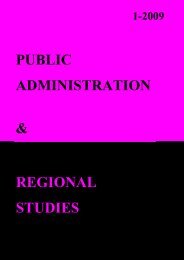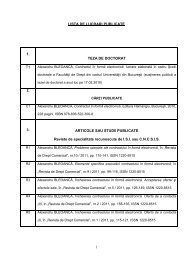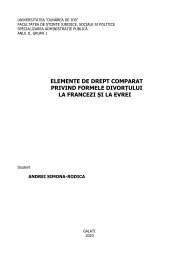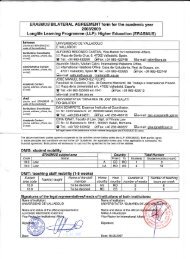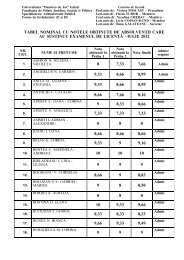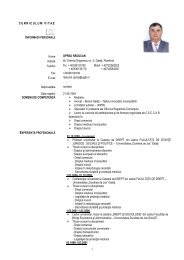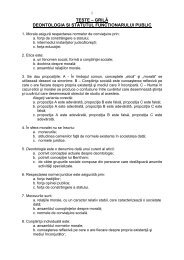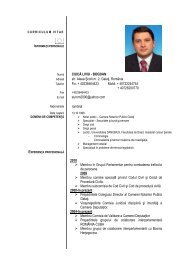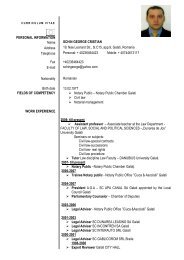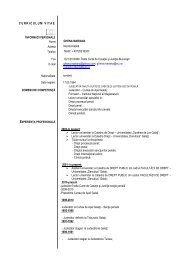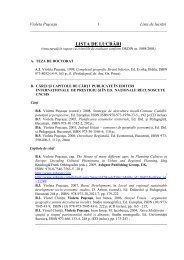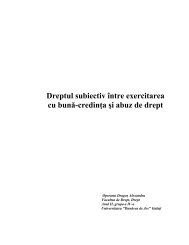regional studies public administration - Facultatea de Drept ...
regional studies public administration - Facultatea de Drept ...
regional studies public administration - Facultatea de Drept ...
Create successful ePaper yourself
Turn your PDF publications into a flip-book with our unique Google optimized e-Paper software.
PUBLIC ADMINISTRATION & REGIONAL STUDIES<br />
2nd Year, No. 1 – 2009<br />
Galati University Press, ISSN 2065 -1759<br />
Key words: traditional exploitation, community forest, environment,<br />
monetary poverty.<br />
1. Introduction<br />
It is generally accepted that the industrial exploitation of timber in<br />
most African countries, though it has contributed to the growth of their<br />
respective Gross Domestic Products (GDPs), has practically not brought<br />
any benefit to the riparian populations of the zones of exploitation of the<br />
resource. This led Cameroon to adopt new forest legislation in 1994 in<br />
which the concept of Community Forest (CF) is put forward. Its main<br />
objective is to first of all benefit the local rural populations concerned<br />
through their participation in the conservation and management of their<br />
forest.<br />
The forest is central to the life of the population of the East Province<br />
of Cameroon. The population lives in a natural <strong>de</strong>pen<strong>de</strong>nce and even<br />
organic relationship with the forest through the exercise of their “rights of<br />
usage” on the forest resources.<br />
The forest is among the largest renewable timber and non-timber<br />
natural resources of Cameroon. It occupies 60% of the national territory,<br />
being about 22 million hectares. Concerning timber resources, the national<br />
forest sector already contributed for 15% of international tra<strong>de</strong> in 1995,<br />
which represented 6% of GDP (Fao, 1997). In the year 2000, forest<br />
exploitations in the country rose to 25% of exports, representing 7% of GDP<br />
(Fomete, 2001). On the fiscal si<strong>de</strong>, from 2 billions in 1993, revenues from the<br />
forestry sector increased to 40 billion CFA F in 2001/2002, representing a<br />
growth of 95%.<br />
Law n° 94/01 of 20th January 1994, regulating forest, wildlife and<br />
fishery in Cameroon, ma<strong>de</strong> provisions starting January 1999, for the<br />
stoppage of the exportation of timber of certain species called “traditional”.<br />
These species are those that are highly <strong>de</strong>man<strong>de</strong>d. Also, there exist a less<br />
popular “intermediate” species and whose exploitation is in progression.<br />
The last category is that of “promotion” species which are not well known<br />
and that need advertising. In August of the same year, an Ordinance from<br />
the Presi<strong>de</strong>nt of the Re<strong>public</strong> stated that 70% of timber will henceforth be<br />
transformed locally, for a period of 5 years, i.e. up to 2004. An exception is<br />
given to “promotion” species that can still be exported for five years after<br />
2004, that is, normally up to 2009. Above this date, all species must then be<br />
transformed locally at 100%.<br />
60




